City of Arts and Sciences of Valencia, an innovative architectural, cultural and leisure complex by Santiago Calatrava and Félix Candela
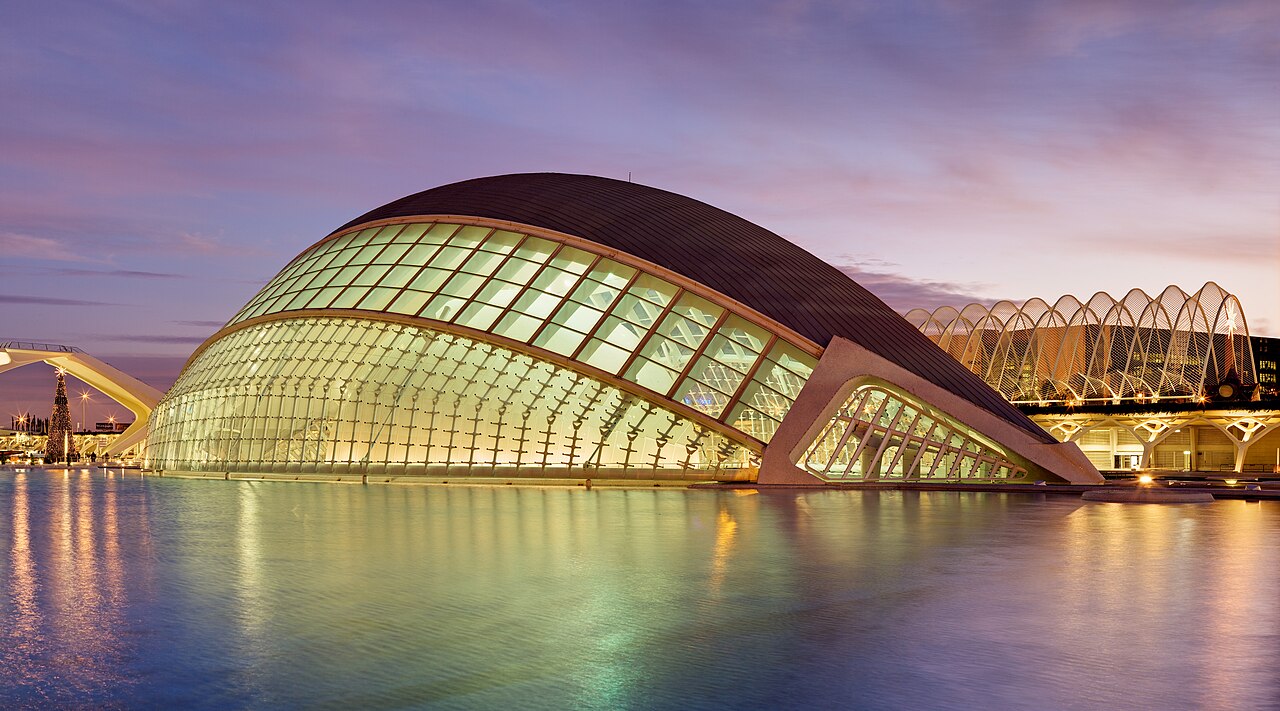
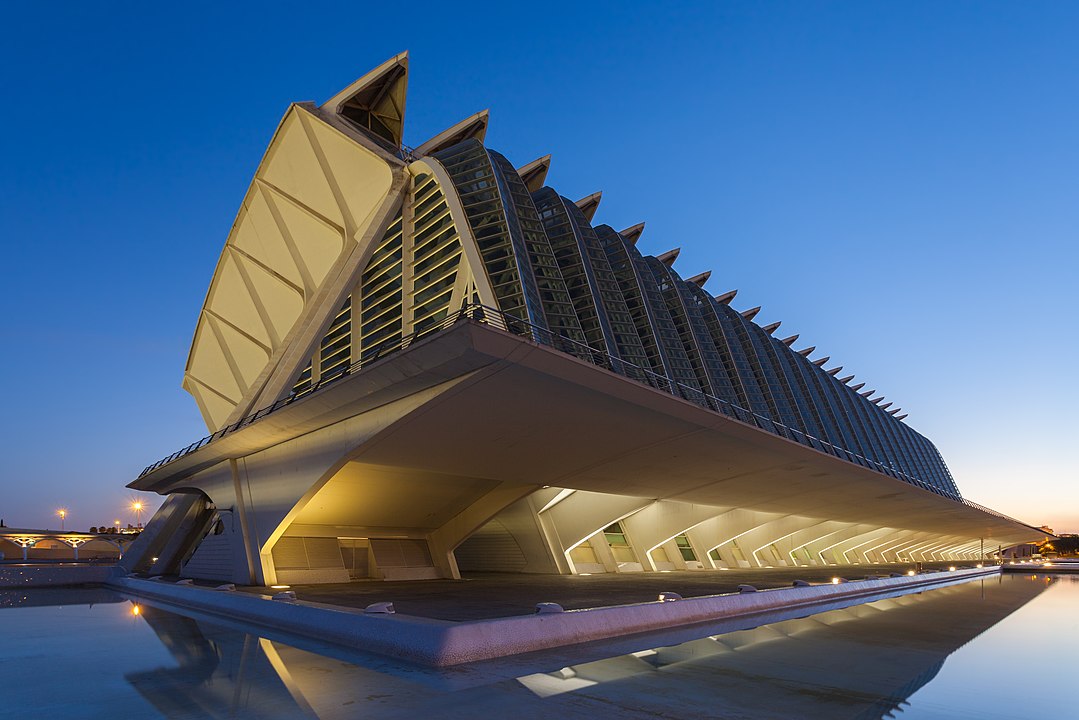
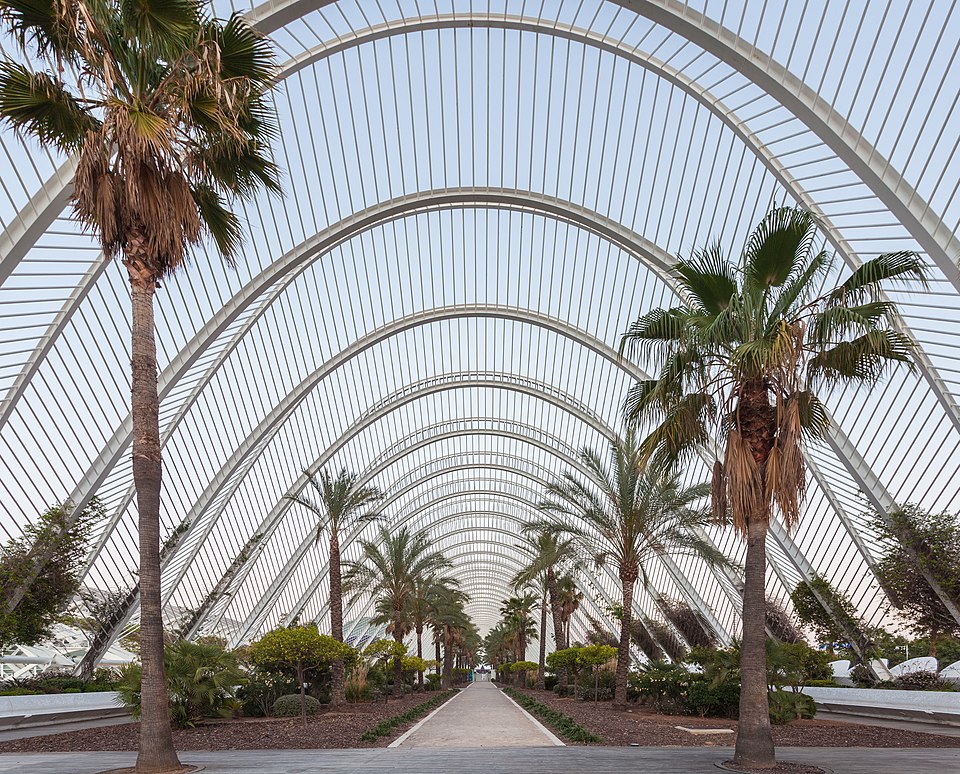
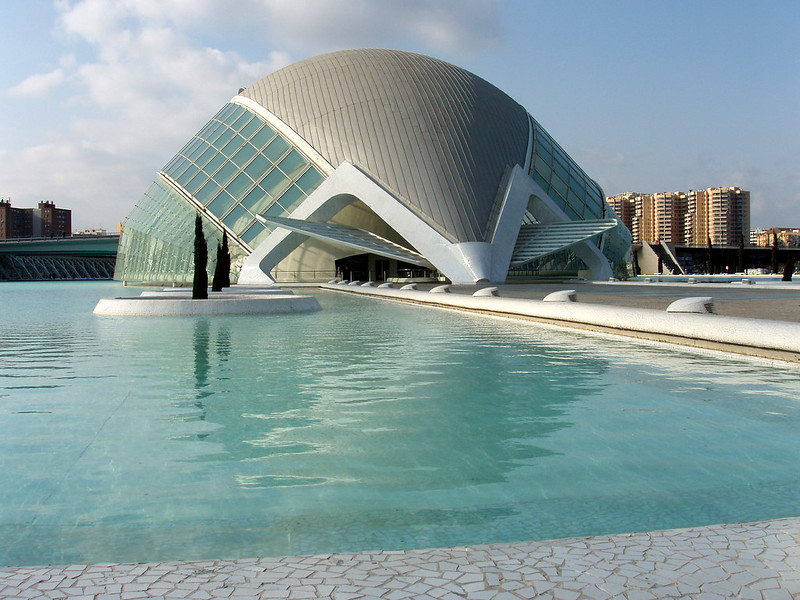
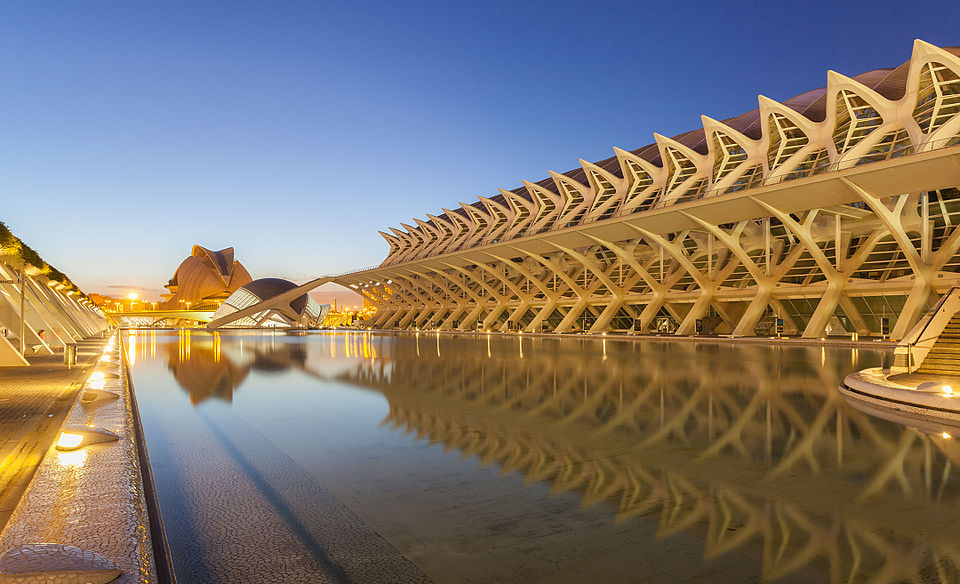
Actualizado el
The City of Arts and Sciences complex is an innovative architectural, cultural and leisure ensemble designed by Santiago Calatrava and Félix Candela. Stretching along the former Turia riverbed in Valencia, it combines futuristic buildings, green spaces and entertainment zones to become a modern emblem of the city.
Where is the City of Arts and Sciences?
It is located in the Turia Gardens, the old Turia river course, between the Aragón and Assut de l’Or bridges, in the Quatre Carreres district of Valencia. The complex extends nearly 2 km, integrating striking architecture, pedestrian promenades and extensive landscaped areas.
When and how was it built?
After the Turia diversion in 1957, the project began in 1996 with the construction of L’Hemisfèric, designed by Candela and inaugurated in 1998. Between 1998 and 2005, the Palau de les Arts Reina Sofía, Umbracle, Oceanogràfic, Principe Felipe Science Museum and the Ágora were added. The urban regeneration solidified throughout the first decade of the 21st century, turning the former riverbed into a cultural and leisure axis.
Why is it so significant?
- Avant-garde architecture: organic forms, cutting-edge structures and contemporary materials define a unique urban landscape.
- Cultural and leisure offerings: from IMAX cinema and planetarium to Europe’s largest aquarium, interactive science museum, opera house and exhibition spaces.
- Urban revitalization: transformed an abandoned riverbed into a major green and cultural lung, attracting millions of visitors each year.
What can we see during the visit?
- L’Hemisfèric, featuring IMAX cinema, planetarium and laser shows.
- Principe Felipe Science Museum, with interactive exhibitions on science and technology.
- Oceanogràfic, Europe’s largest aquarium showcasing diverse marine ecosystems.
- Palau de les Arts Reina Sofía, a center for performing arts and opera.
- Umbracle, a landscaped walk with sculptures and covered parking.
- Ágora, a multifunctional space for events and concerts.
How is the visit organized?
Entry to the grounds is free, but individual buildings require tickets. It is recommended to plan ahead and purchase tickets online; allow at least half a day to explore the main attractions.
Where to find information on hours and rates?
Visit the official website (cac.es) for opening times, ticket prices, combined-pass options and guided tour reservations.
What else to see nearby?
- Turia Gardens, a vast urban park with sports and leisure areas.
- Carmen Quarter, the historic old town full of narrow streets and traditional bars.
- Plaza del Ayuntamiento, the bustling city center with modernist architecture.
- Mercado de Colón, a modernist jewel turned gastronomic destination.
In short, Valencia’s City of Arts and Sciences is an international benchmark of contemporary architecture and cultural leisure, blending art, science and nature in a unique urban setting.
How to get there
Se ubica en el Jardín del Turia, el antiguo cauce del río Turia, entre los puentes de Aragón y de l’Assut de l’Or, en el distrito de Quatre Carreres de València.
Decimal: 39.454444°, -0.350278°
DMS: 39°27'16" N, 0°21'01" O


















